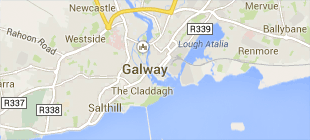-
Cúrsaí
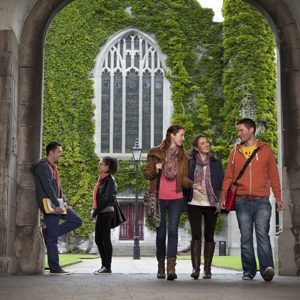
Cúrsaí
Tá roghnú cúrsa léinn ar cheann de na cinntí is tábhachtaí dá ndéanfaidh tú choíche! Féach na cúrsaí atá againn anseo agus an méid a deir mic léinn agus léachtóirí faoi na cúrsaí sin a bhfuil spéis agatsa iontu.
-
Saol na hOllscoile
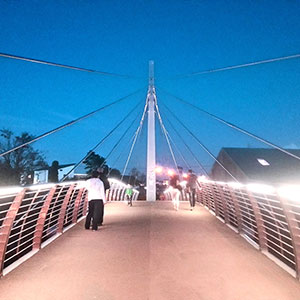
Saol na hOllscoile
Chuile bhliain roghnaíonn os cionn 4,000 duine Ollscoil na Gaillimhe mar chéad rogha. Faigh amach faoin saol in Ollscoil na Gaillimhe anseo.
-
Eolas Fúinn
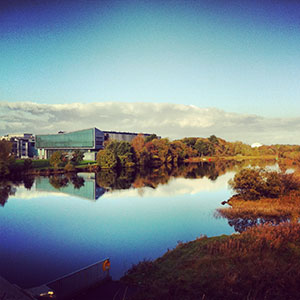
Eolas faoi Ollscoil na Gaillimhe
Bí ar an eolas faoin Ollscoil seo agus na fáthanna a bhfuil sí chomh speisialta sin – an stair thar a bheith spéisiúil a bhaineann leis an Ollscoil agus an nuacht is déanaí agus na hócáidí atá ar na bacáin.
-
Coláistí & Scoileanna
- Scoil na Tíreolaíochta, na Seandálaíochta agus Léann Éireannaigh
- Coláiste an Ghnó, an Bheartais Phoiblí & an Dlí
- Coláiste an Leighis, an Altranais & na nEolaíochtaí Sláinte
- Coláiste na hEolaíochta agus na hInnealtóireachta
- Scoil na dTeangacha, na Litríochtaí agus na gCultúr
- Roinn na Gaeilge
- An tAcadamh
- Stair
- Idirnáisiúnta
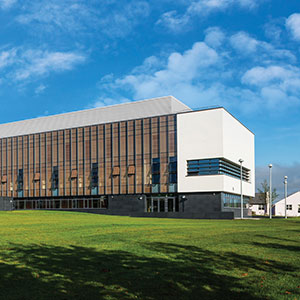
Coláistí & Scoileanna
Tá aitheantas idirnáisiúnta bainte amach ag Ollscoil na Gaillimhe mar ollscoil atá á treorú ag an taighde agus rún daingean aici teagasc den chéad scoth a chur ar fáil i réimsí éagsúla saineolais.
-
Taighde
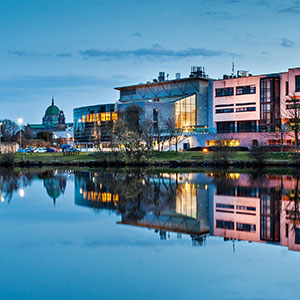
Nithe Fónta á gCruthú as Smaointe Úra
Tugann ár dtaighdeoirí aghaidh ar chuid de na dúshláin is práinní san 21ú Céad.
-
Gnó & Tionscal
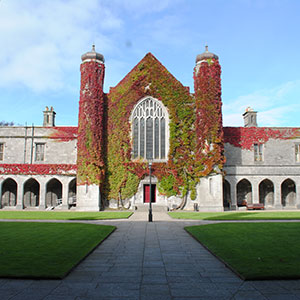
Tacaíocht do Thaighde Úrnua in Ollscoil na Gaillimhe
Déanaimid deiseanna tráchtála a chuardach agus a chothú don phobal taighde in Ollscoil na Gaillimhe, mar aon le comhpháirtíocht tionsclaíochta a chothú.
-
Alumni, Cairde & Lucht Tacaíochta
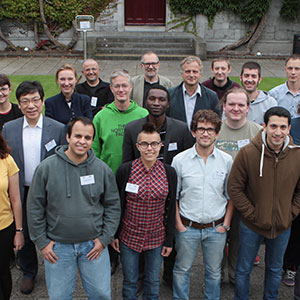
Alumni, Cairde & Lucht Tacaíochta
Tá os cionn 90,000 céimí de chuid Ollscoil na Gaillimhe ann ar fud an domhain. Déan nasc linn agus beidh teacht agat ar an gcomhphobal sin ar líne.
-
Rannpháirtíocht Pobail
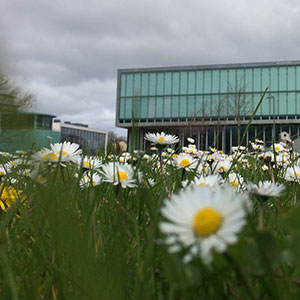
Rannpháirtíocht sa Phobal
In Ollscoil na Gaillimhe, creidimid go n-éireoidh níos fearr leat más féidir leat an méid a fhoghlaimíonn tú a chur i bhfeidhm i do shaol féin. Is mar gheall air sin go bhfuil béim mhór ar shocrúcháin oibre nó ar thionscadail phobail i gcuid mhór dár gcúrsaí.
Nuacht
New research suggests passage tombs of Brú na Bóinne served as sophisticated solar observatories
New research by University of Galway suggests that the great passage tombs of the Brú na Bóinne World Heritage Site may have served as significant solar observatories - the backdrop to regional gatherings, religious festivals and monumental construction more than 5000 years ago. The alignment of Newgrange to winter and summer solstice phenomena, Knowth to a ‘perceived’ autumnal equinox and Dowth to a winter solstice sunset, reveal a more complex so-called ‘cosmic calendar’ of Neolithic ritual events than had been previously recognised. Further insight on the analysis can be read at The Brú na Bóinne Research Project - University of Galway Built by Neolithic communities around 3,200 BC, the passage tomb at Newgrange is celebrated worldwide for the fact that its chamber, buried deep in the core of the mound, is illuminated annually by the rays of the rising sun at the winter solstice. It is ringed by 97 large kerbstones, some elaborately engraved with megalithic art. Joe Fenwick, Archaeological Field Officer with the School of Geography, Archaeology and Irish Studies at University of Galway, has offered new insights into the carvings found on entrance stone to Newgrange and Kerbstone 52 at the rear of the structure, which effectively bookend the tomb alignment, marking the winter sunrise and summer sunset solstices respectively. His analysis further suggests that these carvings are not merely decorative, but had specific meaning and significance in relation to the solar phenomena of the shortest and longest days of the year. Mr Fenwick explains: “It is well known that the passage tomb at the heart of Newgrange is aligned to sunrise at the winter solstice. However, the spiral artwork on the kerbstones mark both the winter solstice and the summer solstice. It would also suggest that Newgrange probably had annual gatherings to mark both the winter and summer solstices.” The new analysis and observations of the megalithic art on the entrance stone to Newgrange have revealed a novel interpretation of its meaning and significance. A vertical line at the centre of the stone marks the alignment of the tomb to the winter solstice. The spirals to the left of the line wind clockwise inwards towards their centre, representing the shortening journeys of the sun across the sky, from the height of summer to the shortest day at the winter solstice. The spirals to the right of this line, however, spiral clockwise outwards from the centre and so represent the lengthening of the solar journeys across the sky from the shorter winter days towards the summer solstice. Mr Fenwick continued: “In short, it is an abstracted representation of the annular solar cycle centred on the winter solstice. This is the first time that the artwork has been interpreted in this way, and it changes how we view Newgrange and the people who built it. Newgrange could be thought of as a sophisticated solar observatory, as well as a cathedral for worship and ritual.” These findings are presented in a chapter entitled "Unravelling the Spiral: Passage Tomb Alignment, Related Kerbstone Art, and Cycles of Monumental Construction at Brú na Bóinne", featured in the recently published book People, Prehistory, and the Past: Essays in Honour of John Waddell, (Four Courts Press, 2025). The book is dedicated to Professor Waddell, the Emeritus Professor of Archaeology at University of Galway, and a highly respected figure in Irish and international archaeology. It brings together contributions from colleagues with ties to the University’s Discipline of Archaeology. Edited by Michelle Comber and Kieran O’Conor, the book includes a range of significant new research spanning subjects from prehistoric landscapes, decorative goldwork and artefact distributions to medieval lordships, ogham inscription, and the remarkable contribution of some pioneering female archaeologists. The book was officially launched at Claregalway Castle by University of Galway Interim Deputy President and Registrar, Professor Becky Whay, earlier this month and a copy was also presented to the President of Ireland, Michael D. Higgins, at Áras an Uachtaráin (see: News, Events, Social Media & Spring Lunchtime Lecture Series - University of Galway). Ends
University of Galway hosts STEAM workshops for young people
Road Safety Reimagined initiative highlights ‘deadly consequences’ of distracted driving
University of Galway Societies win at national awards
Friday, 16 December 2022
All eligible University of Galway full time and part time hourly payscales have been updated in line with the provisions of Building Momentum - A New Public Service Agreement 2021-22. Specifically the following increases have been implemented: - With effect from 02nd February 2022, payscales received a 3% increase - With effect from 01st October 2022- payscales received a further 1% increase or €500, whichever is greater We are still awaiting sanction for the implementation of FEMPI restoration wef 1st July 2022 (save for a limited number of pay scales). Therefore there are no changes to those grades\pensions for now. See paragraph 1.3 in the above link for more details. Further advice will be issued for these grades in due course.
Monday, 24 April 2023
We have been asked to bring to your attention the fact that Secondment Expression of Interest Notices has been issued for the Public Service Transformation Division of the Department of Public Expenditure, NDP Delivery and Reform. Expressions of interest are invited from across all sectors of the Public Service, including higher education, and across a number of grades. Notices are available directly at the following link, and DPENDR and DFHERIS would very much appreciate your support in circulating to your staff. The closing date for applications is 2nd May, and we understand the notices issued on Friday 14th April.









